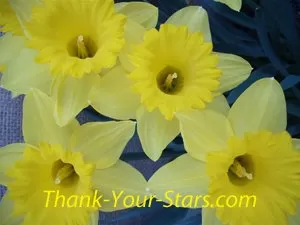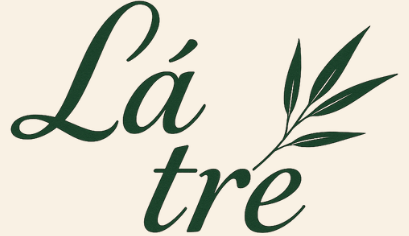Easter is a time of profound renewal, mirroring the vibrant resurgence of nature in spring. The world sheds its winter cloak, bursting forth in color and life, much like the hope that blooms with the story of Easter. For many, Short Easter Poems capture this beautiful parallel, offering concise yet deeply resonant reflections on faith, rebirth, and the joyful spirit of the season.
These poems often weave together the imagery of spring flowers – symbols of new beginnings – with the central themes of Christ’s death and resurrection. They remind us that just as tiny bulbs push through cold earth towards the sun, life triumphs over darkness. Exploring short easter poem for church can reveal how these concise verses are used in worship to convey powerful messages simply and effectively.
Here, we delve into a collection of short Easter poems by Paul Berchtold that beautifully connect the natural world’s awakening with the spiritual significance of Easter. These verses invite us to pause and reflect on the wonder of both spring and resurrection.
 Four vibrant yellow daffodils blooming in a garden
Four vibrant yellow daffodils blooming in a garden
The emergence of early spring flowers, like daffodils and crocuses, often occurs despite challenging weather, pushing through late snow or cold rains. This resilience serves as a powerful metaphor for the Easter story, where hope and new life emerge from sorrow and sacrifice. This connection between the natural world’s struggle and triumph and the spiritual journey is a common thread in easter short poems.
The Little Early Flower
by Paul Berchtold, April, 2011
Purple-blossomed little crocus,
You bloom, then die, very early,
You call on us to keep our focus,
“Do your duty, steady, surely.”
Jesus died in his prime,
Betrayed for just a pittance.
It is for us salvation time.
The wicked say good riddance.
The tyrants fall, Christ new life brings,
Warmth to melt cold winter’s story,
Light from Christ forever springs,
New summer in all it’s glory.
This poem uses the fleeting life of the crocus to reflect on Christ’s sacrifice. The crocus blooms early and seems to die back quickly, much like Jesus’ short earthly ministry culminating in his death. However, the poem pivots to the enduring triumph of his resurrection, which brings warmth, light, and everlasting glory, akin to the progression of seasons from winter to summer. This reminds us of the themes often explored in poems about life and death, where the end is often presented as a transition to a new state.
 Vibrant purple crocus flower with yellow stamen in springtime
Vibrant purple crocus flower with yellow stamen in springtime
The tradition of decorating churches and homes with flowers at Easter, especially lilies, highlights the symbolic link between floral beauty and resurrection. Lilies, emerging pristine from seemingly dormant bulbs, powerfully symbolize the purity and new life of Christ risen. The simple act of witnessing the first spring blooms after a long winter evokes a sense of relief and joy, much like the feeling of hope that dawned with the Resurrection after days of despair. This anticipation and joy are central to why easter poems for church services are often filled with floral imagery.
Heaven and Nature Shine
by Paul Berchtold, April, 2011
Today Messiah rises.
Overcomes the gloom,
The flowers bring surprises,
Bursting forth in bloom.
Rise in beauty little flowers,
Do your duty divine powers,
Alleluia! let all nature sing,
Alleluia! to the gentle King.
This short poem directly links Christ’s rising with the blooming of flowers. It sees the natural world’s display of beauty as a reflection of the divine power at work in the resurrection. The call for all nature to sing “Alleluia” emphasizes the universal joy and celebration that Easter brings, suggesting that the earth itself rejoices in this victory over gloom.
 Tight shot of unopened blue hyacinth flower buds on green stems
Tight shot of unopened blue hyacinth flower buds on green stems
Daffodils, with their bright yellow trumpets, are quintessential spring flowers. Their cheerful appearance after winter often feels like a herald of warmer days and renewed energy. In the context of Easter, their brightness can symbolize the radiant light of the risen Christ, dispelling the darkness of death and despair. Many famous easter poems utilize such vivid natural imagery to convey spiritual truths.
Daffodil Beauty
by Paul Berchtold, April, 2011
Bright daffodils with yellow frills,
Meet the sunshine, dispelling chills,
Wave your petals, show your faces,
Smile with colors God’s hand places.
Christ as a boy, grew like a flower,
Then as a man, fought evil’s power.
On the cross, it seemed to end;
He gave his life, as truest friend.
Now he rises with brilliant light,
And like the sun, shines ever bright,
Forever risen, bold and free,
Heaven is open, for you and me.
This poem follows the life cycle of Christ, comparing his growth to that of a flower. It moves from his early life to his struggle against evil, his sacrifice on the cross, and finally, his glorious resurrection. The image of Christ rising “with brilliant light” and shining “like the sun” echoes the bright, life-affirming presence of the daffodils, symbolizing the hope and eternal life that his resurrection offers to all.
These short Easter poems beautifully illustrate how the natural world can serve as a powerful metaphor for spiritual truths. The emergence of spring flowers from the cold ground becomes a tangible representation of resurrection and the promise of new life that is at the heart of Easter. They invite us to see the divine in the everyday beauty of nature and to find hope in the cyclical renewal of the earth, which points towards the eternal renewal offered by the Easter message.
